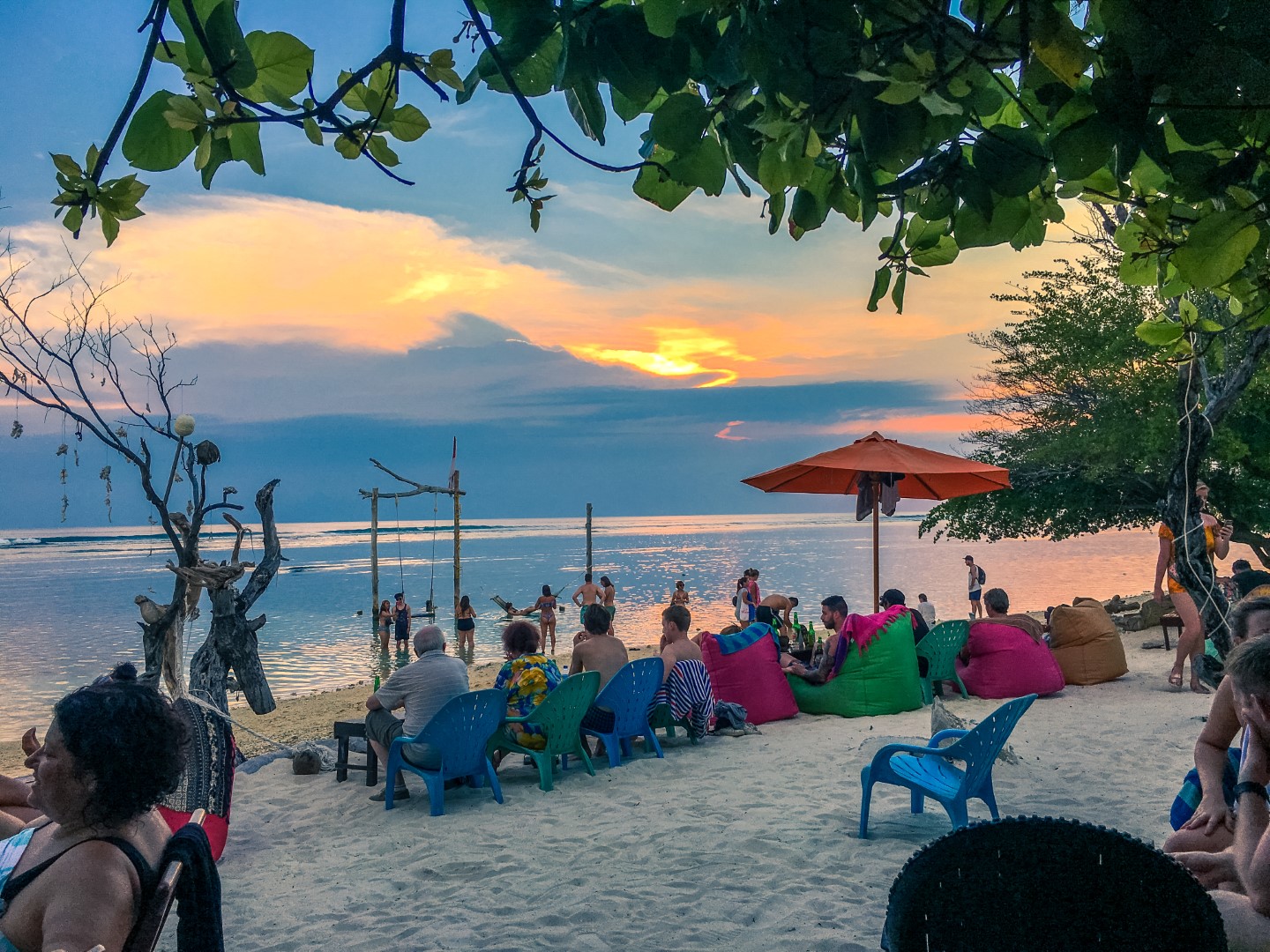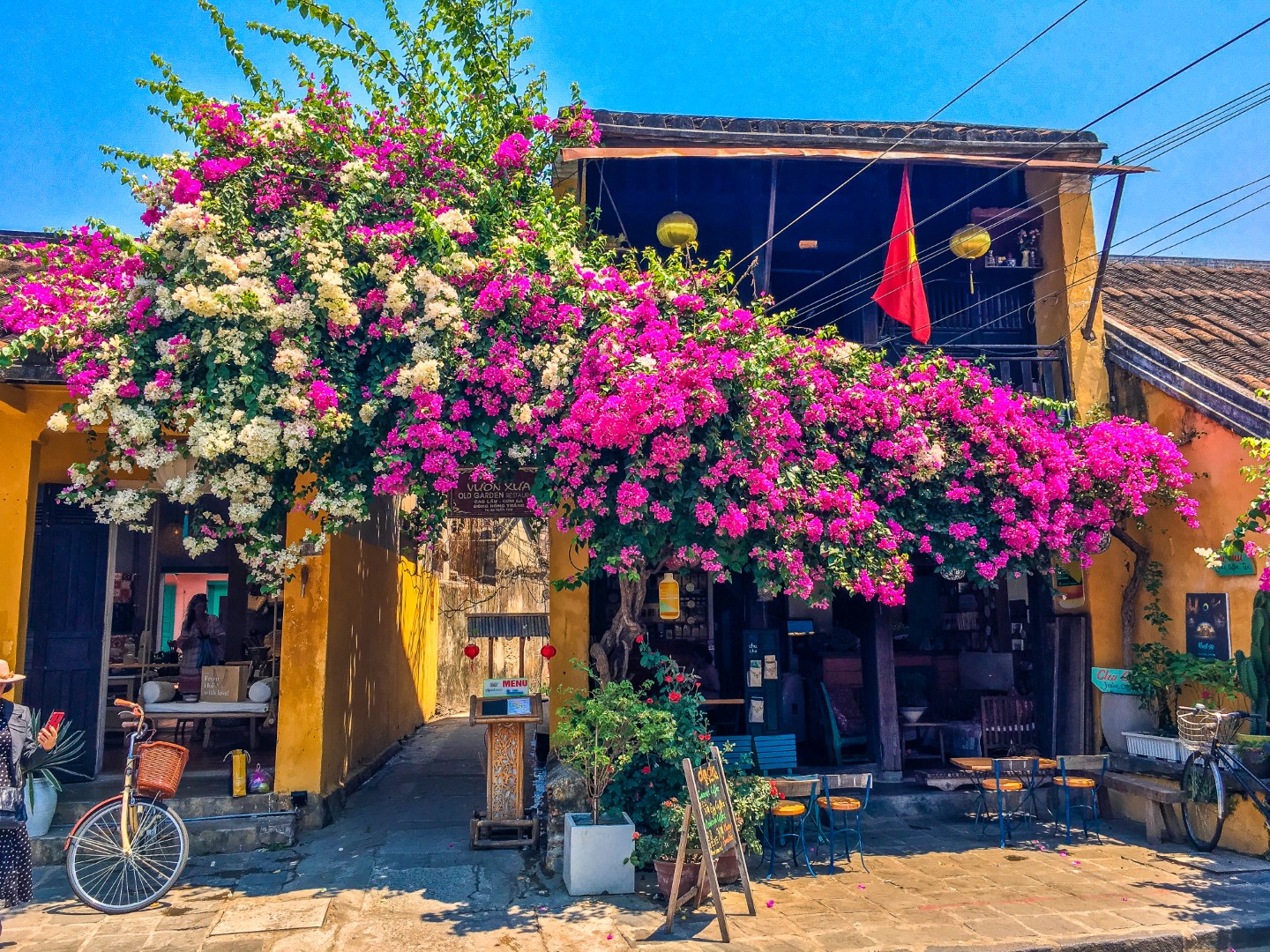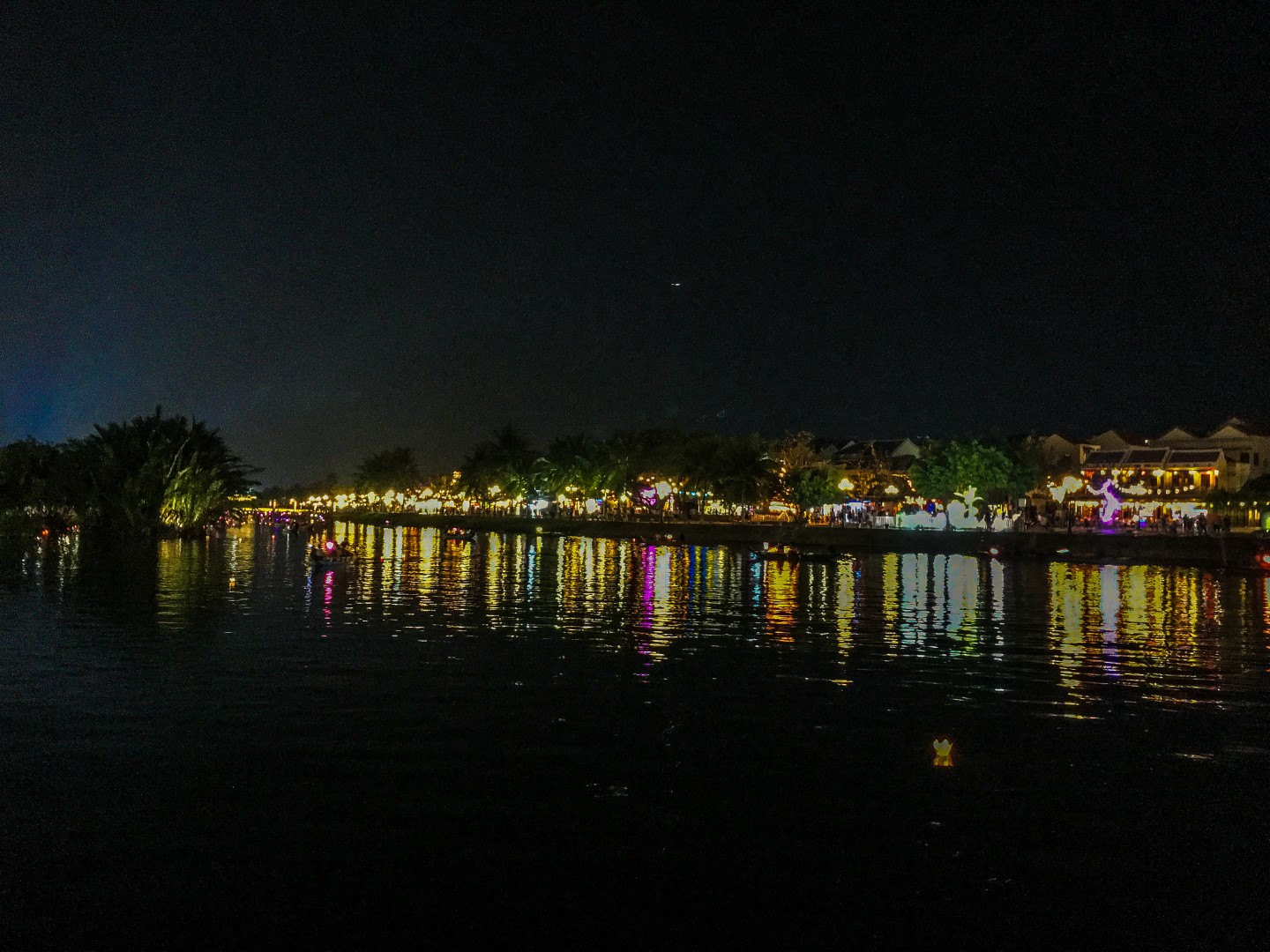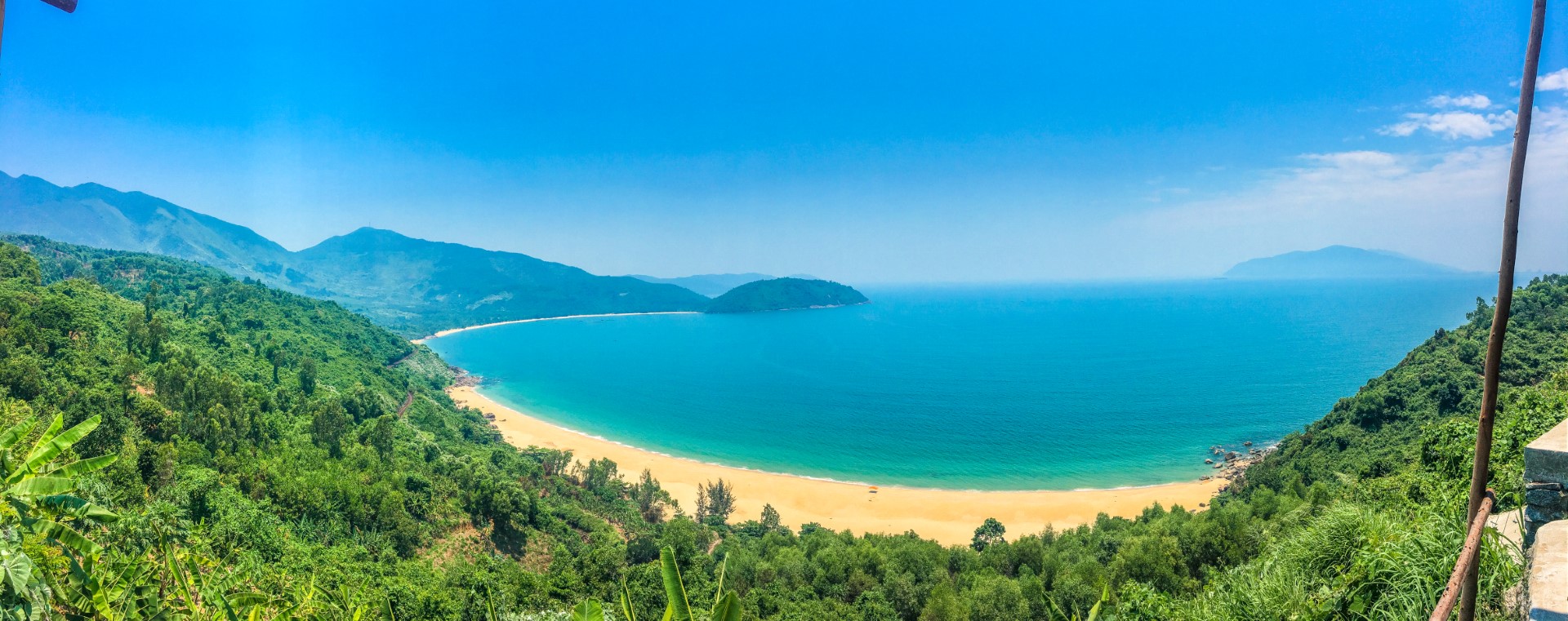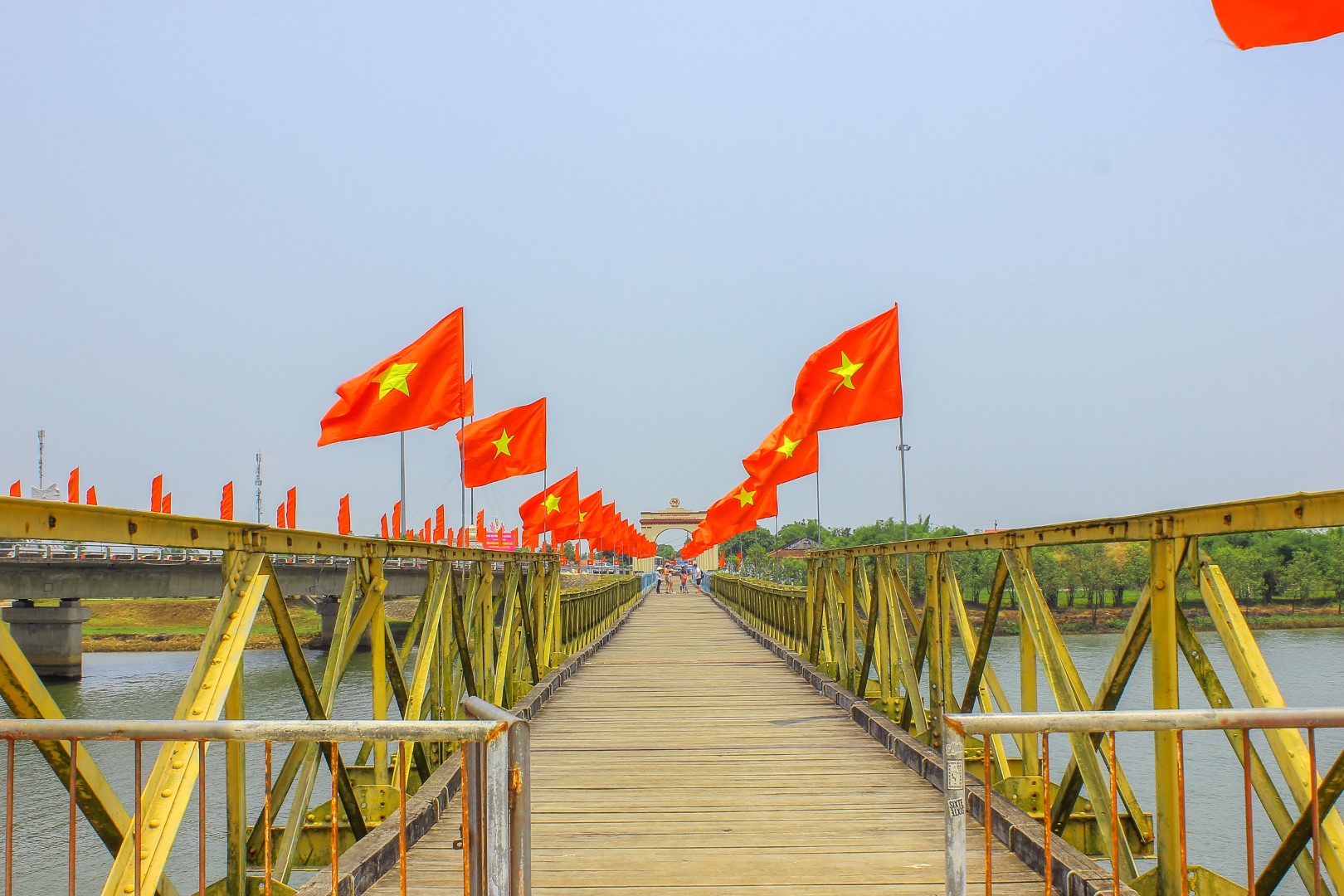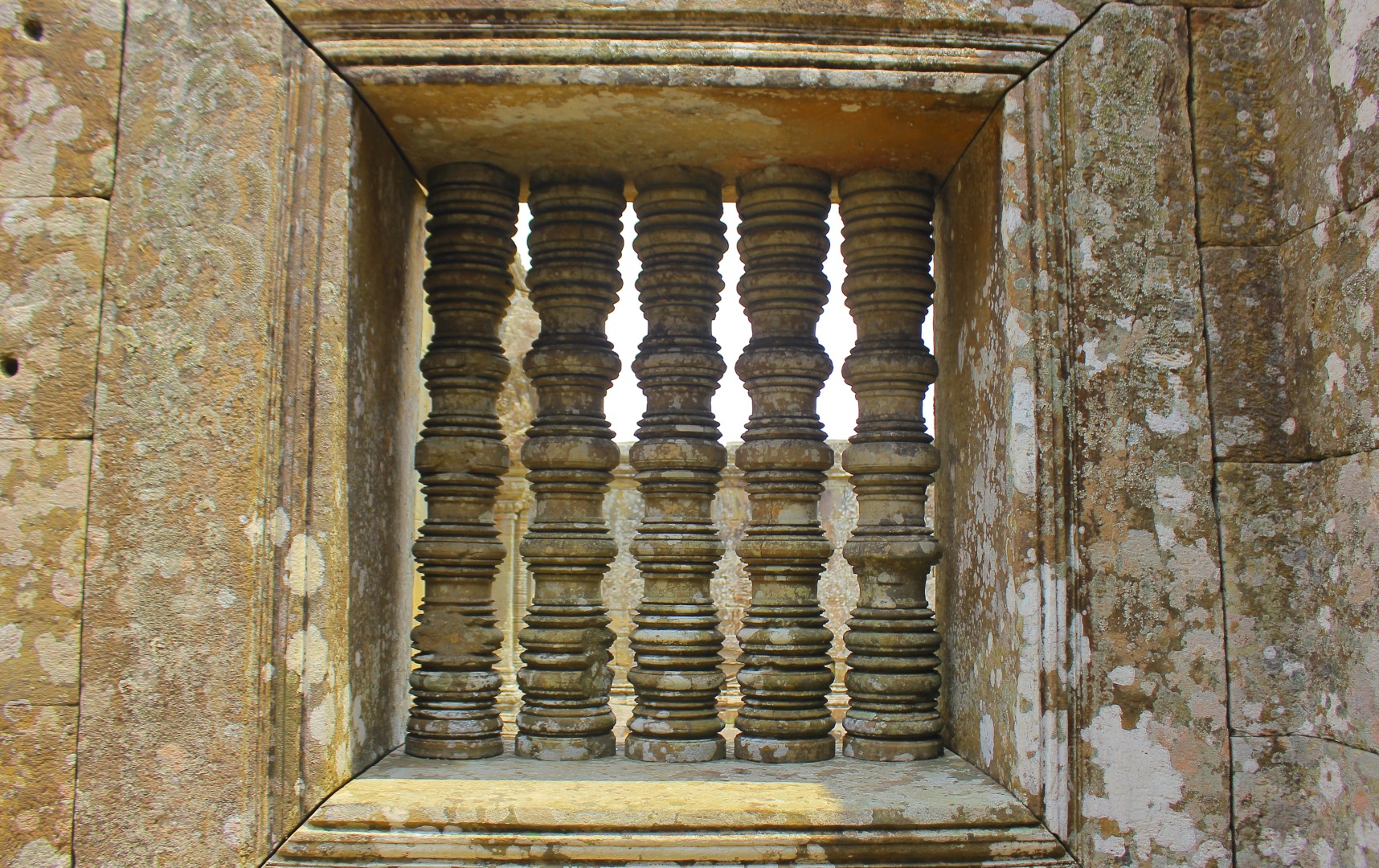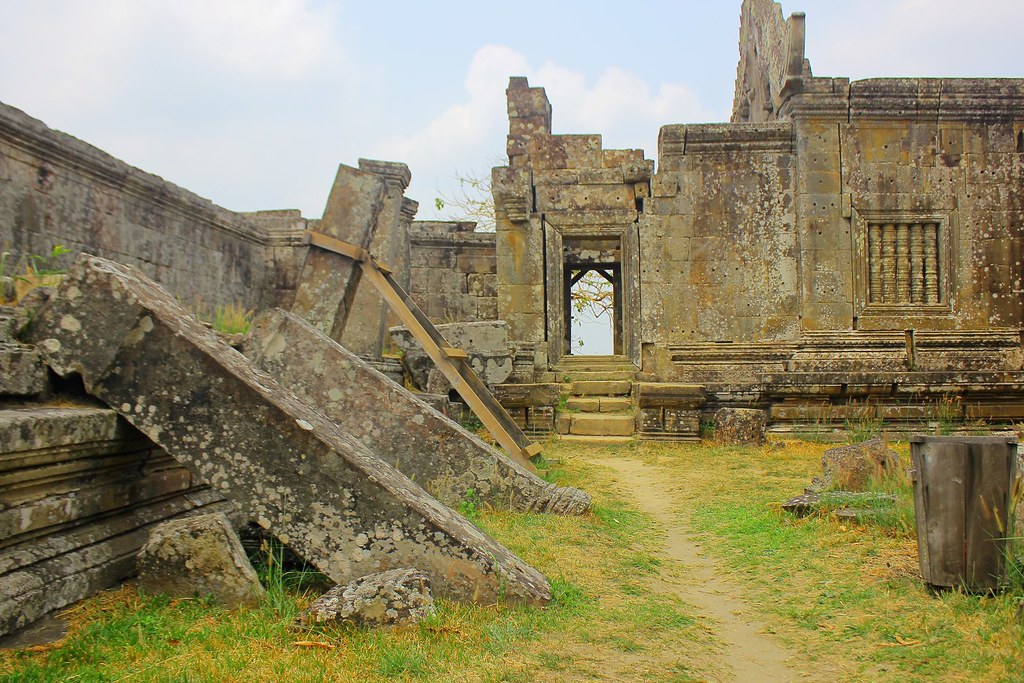Up and out by 8am. Hitting the road today, to the Cambodian-Thai border. To disputed lands. Devid asks us to take our passports, in case something happens and we need to prove our nationality. Sounds ominous.
As we drive, Devid and Patrick discuss the history of Preah Vihear, the border dispute and the claims from both countries that the temple belongs to them. Preah Vihear is a temple perched atop a mountain in the Dangrek range. Originally, the French colonial officers agreed to draw the border according the watershed on the range which would have given the temple to Siam (Thailand). Inexplicably, the French officers changed the maps and enclosed the temple in Cambodian lands. This sparks a decades-long dispute about the location of the border and the temple, which has been the site of bloodshed and fighting as recently as 2011.
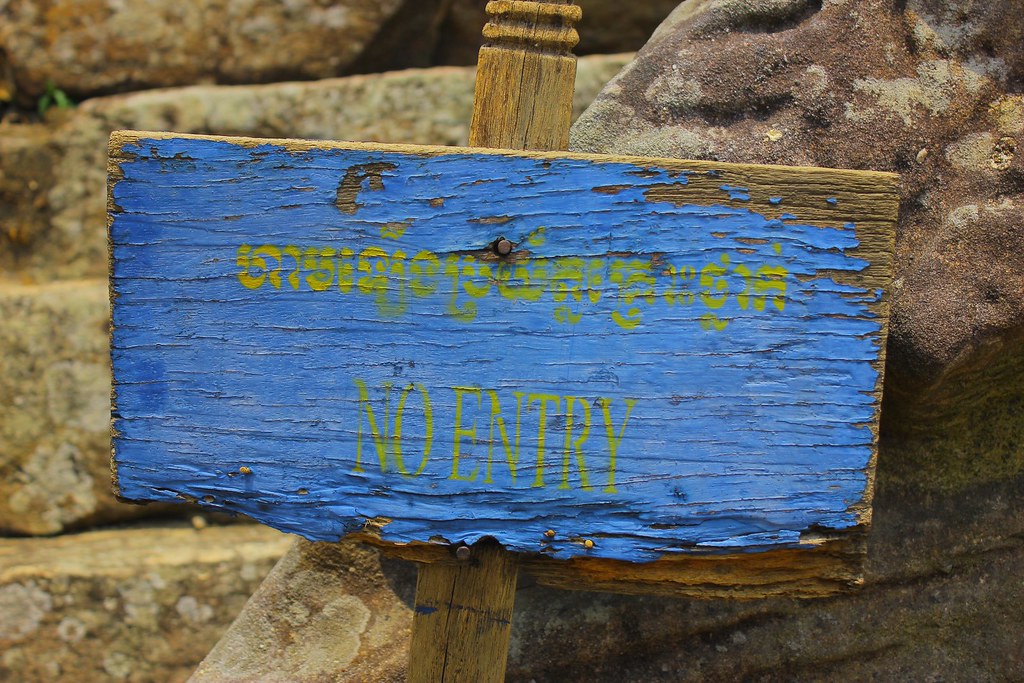
Roads disintegrate into potholed, gravel tracks as we further and further away from Siem Reap. The land is drier, the air is dustier. Tiny villages bake under the already hot sun. The poverty of this country becomes more evident; the out of date Lonely Planet in my lap says these are some of the poorest provinces in Cambodia. I believe it. The gulf between me, sitting in this air conditioned SUV, speeding past rag-clad children playing with sticks in the dirt, has never been more obvious. A clash of two worlds. The haves. The have nots. I feel a pang of guilt.
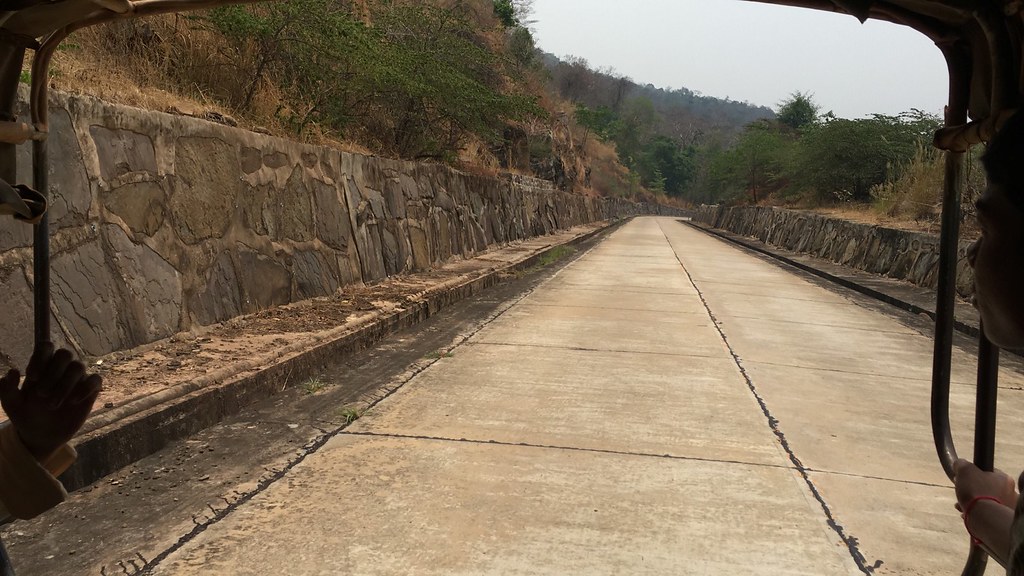
We stop at the ticket office, after more than three hours on the road. They’ve just built a shiny new toilet block. We pay for the tickets, pay for our transfer and leap into the back of an over sized black Hilux. “Please hang on, the road is very steep” Devid asks, grabbing the side of the ute. He’s not wrong. The ride up is fast, and I don’t see much except the concrete track trailing behind us. Dad would have called it “bonnet and sky” – that’s all you would have seen from the driver’s seat. We zoom past bunkers built by occupying forces over the years, their sniper-like positions a chilling reminder of where we are.
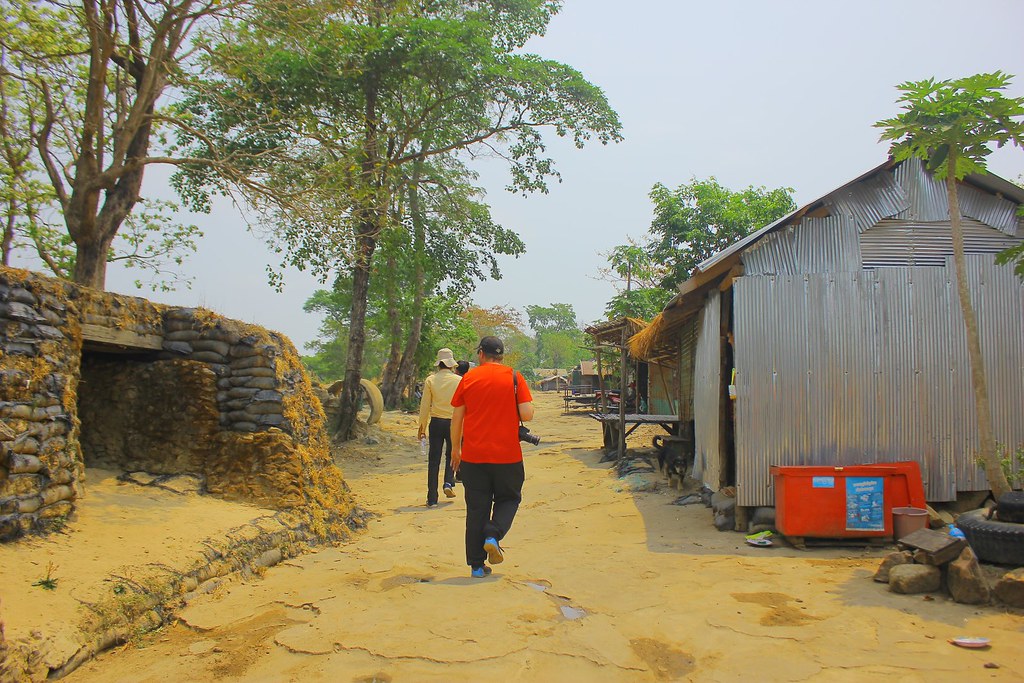
On the top. Along the ridge, more bunkers dug into the earth. Most have their entrances covered by rusting pieces of tin, some have collapsed. It feels surreal to stand on top of this mountain and look across the gully, knowing it is another country. We descend enormous stone steps to the border fence, passing a long house which Devid explains was built by the Cambodian government for the military officers and their family. The soldiers are relaxed, sitting in the shade with no shirts on and playing cards. Smoking heavily. Others snooze in hammocks, strung between the trees. Down beside the razor wire fence which marks the border, a soldier grins at us and shows us his gun. It’s battered and scratched, an old AK-47, Devid translates. The soldier is missing his front teeth.
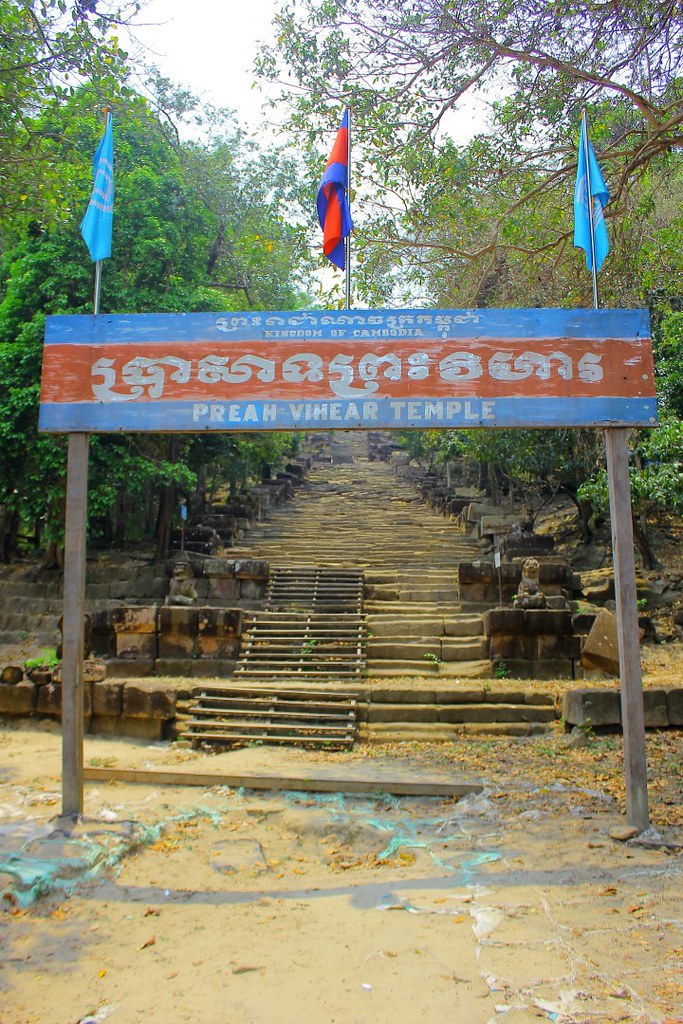
We head back up the hill to the temple itself. I fall behind, as some of the ancient stone steps are as high as my thigh. It makes for slow going, and I’m instantly put to shame by an old soldier, almost running up the steps two at a time. Finally at the top, I suck in deep breaths and wheeze. Really do need that heart rate monitor.
The temple is void of tourists, except for us. We are free to wander through the complex as we like, and there is no shortage of perfect shots. No restoration work is occurring here, and the temple is crumbling in the most charming and unique way. Some of the buildings have been extensively damaged by the conflict, including the lower gallery. We continue to climb through the complex. Each level has a gallery, library or small temple, in various states of disrepair. One level has what was a pond; it lies empty and filled with leaves. I marvel at the size of the stones that have been dragged here, long before we arrived. Carved lintels show Hindu gods, apsaras and other animals, locked in stony perfection for many years. The breeze as we continue our slow climb to the very top is welcomed.
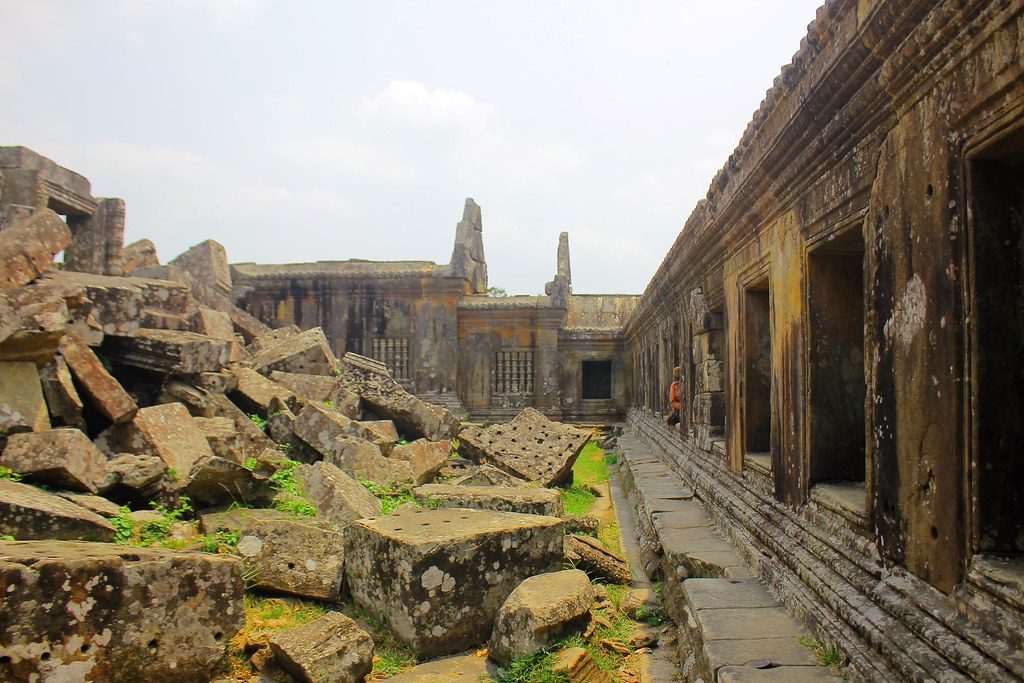
At last, we have reached the absolute top. Thankfully. Finally. I’m not convinced I could heave myself up another step. We follow Devid, climbing through a window as the doorway is blocked by stones that have tumbled. This part of the temple is still used by locals as an active place of worship; there’s a small pile of shoes at the bottom of the stairs leading into the main building, and incense smoke floats out the window. An enormous pile of stone blocks lies to one side of the temple; Devid says this was once the tower on top of the temple, but was struck by lightning. Hundreds of dragonflies zip madly across the sky, sometimes hovering above us as if they are surveying the new visitors to their home.

Left to wander through the temple on my own, I’m careful not to step on anything that looks precarious or precious. Skirt the outside of the gate and scrabble down into the courtyard. Trees poke up through the stone, beginning their stranglehold over the brick. This side of the temple frames the path back down the mountain perfectly. It’s hard to describe this temple, as I am so overwhelmed by its beautifully dilapidated state and its ever-lasting reverence. Our driver is excited to have accompanied us to Preah Vihear, he’s never been before. He’s also busy snapping selfies with the view.
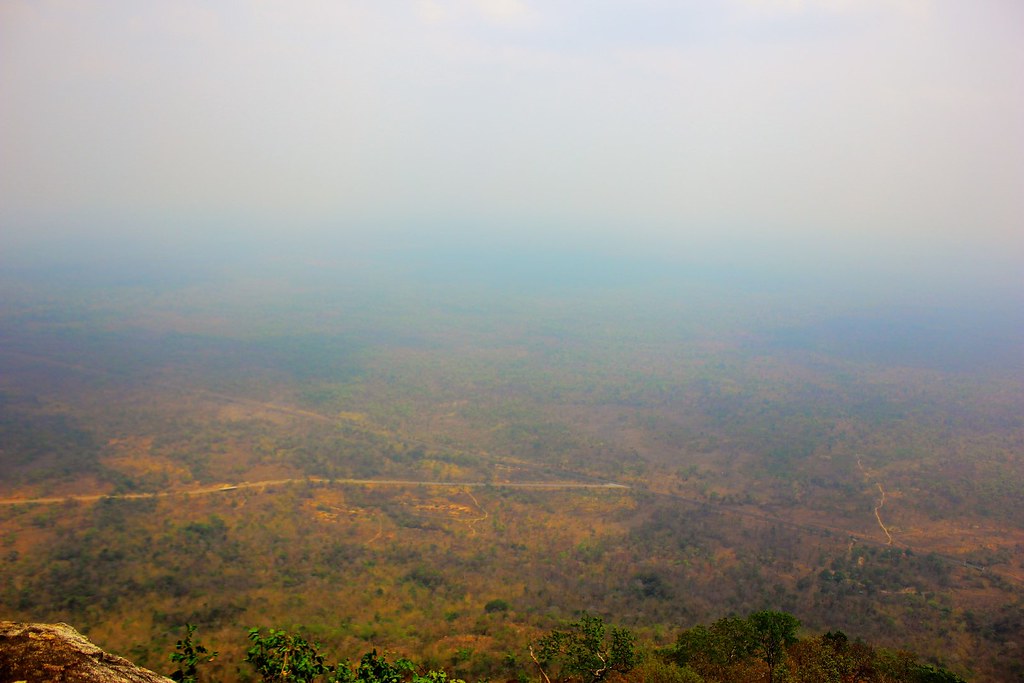
Last stop before we head back down. The cliff edge. There is no fence or railing to prevent you from tumbling over. Just a small white rope propped up on sticks. One sign: “do not fall”. I get as close as I dare, staying well behind a large boulder and propping my leg up to peer over the edge. It’s a long way down. On a clear day, you would see the other mountains, Devid says. Lamenting the smoke haze. He adds that this cliff was where an ancient general threw himself off as a sacrifice to ensure prosperity for his country. Heavy. A few photos and we begin to head down again. As we leave, there’s three tourists and one guide slowly making their way up the hill.
Things to note:
-
- This is not for the faint of heart. Its a long haul, and the roads aren’t great. I recommend a tour guide and driver.
- There’s a restaurant serving a few stir fried dishes and mighty cold drinks next to the ticket office.
- Preah Vihear was the last stand for the Khmer Rouge, and landmines are found in the area. Stick to paths to be on the safe side.
If you’re looking for the other diary entries, you can find them under my Thoughts menu. Happy reading!
